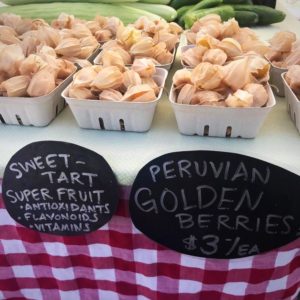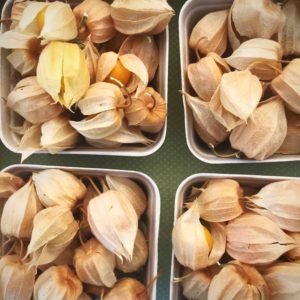One of the best things about a local Farmers’ Market is being introduced to produce you may not see in the grocery store, and being surprised by some of the unusual or unfamiliar produce that grows in the area. If you’ve ever wandered through the farmstand aisles and found yourself wondering, “what the heck is that?” look no further. This week we’re here to inform you on some of the commonly uncommon produce you can find at the Chico Certified Farmers’ Market, in season right now!
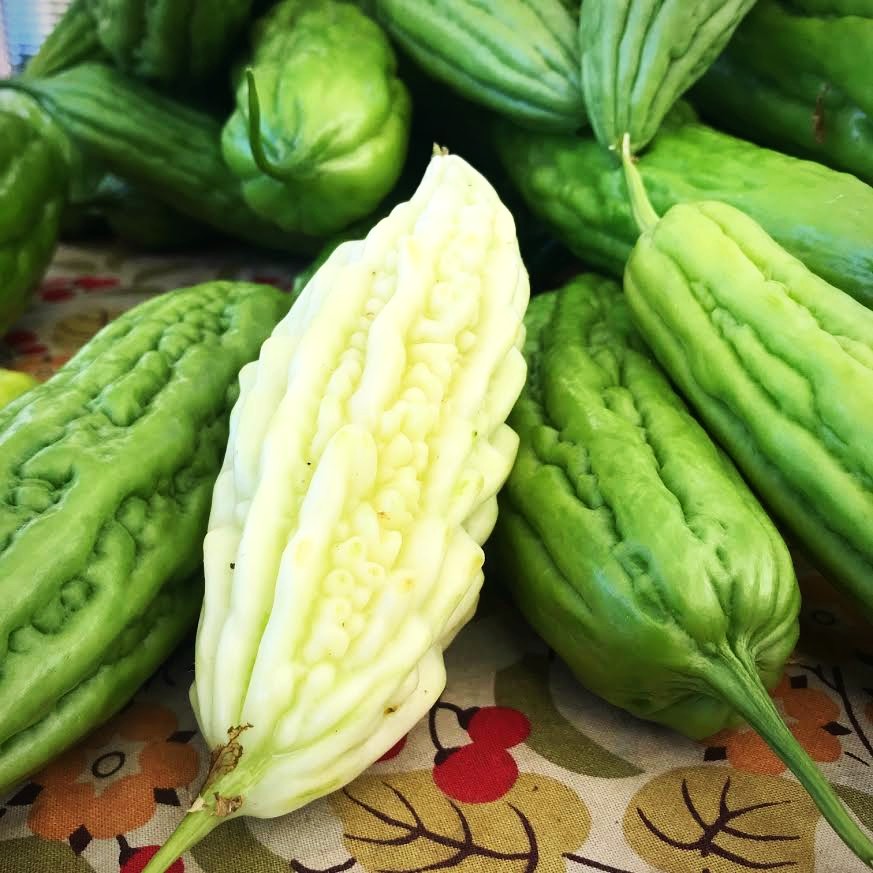
Bitter Melon
Bitter melon looks like a bit like a cucumber with light green wrinkled skin. Its bitter taste is caused by quinine, which has medicinal qualities. Blanching or salting reduces the melon’s bitterness. Mature melons can be cooked unpeeled, but their seeds and pith should be removed as they are the most bitter part. Bitter melon is commonly scrambled with eggs or often stuffed with seafood or meat. It’s also great used in curries or added to stir-fries. The long it is cooked, the more mild the bitterness becomes.
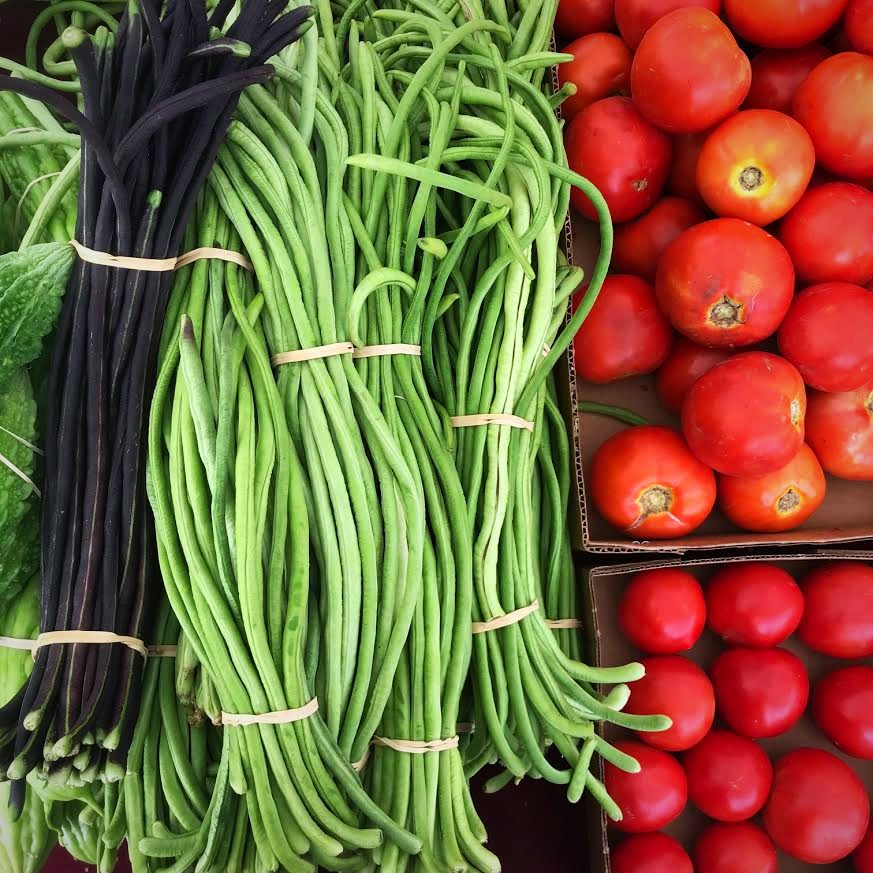
Chinese Long Bean
Also called “yardlong beans” because they can grow up to three feet long, these beans are similar to the common green bean in taste, but the texture is more distinct. Chinese long beans are denser and crunchier than green beans and can be found in different colors, from light and dark green to purple. Unlike green beans, which can taste palatable steamed or boiled, yardlong beans become waterlogged and bland when treated with water. The beans are best cooked with oil: sauteed, stir-fried, or deep-fried, their flavor intensifies and their texture remains tight and juicy.
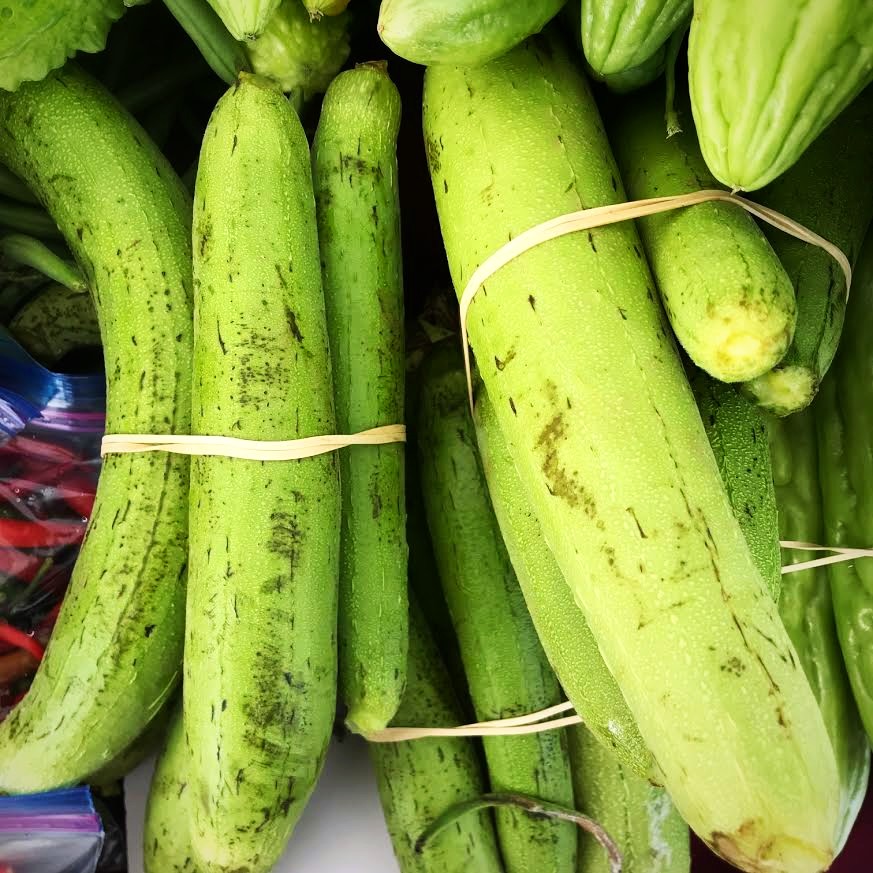
Luffa
Also known as “luffa,” sinqua can be found in angled and smooth varieties. Angled luffa looks like a zucchini with ridges that run lengthwise. Typically eaten when it’s young, it also tastes a bit like zucchini or eggplant, but sweeter. Its spongy texture soaks up the flavor of foods it’s cooked with. Smooth luffa, when grown to maturity and soaked in bleach, peeled, and dried, can be used as a household scrubber—the “loofah sponge.”
- 702a9087 6be2 4c3c 97e2 306f04a1c3c8
- b044b7fd 93b7 450d a924 c498ace4ee2f
Peruvian Goldenberries
What we call a “Goldenberry” goes by a lot of different names- Incan berry, Pichuberry, Chinese lantern, cape gooseberry, strawberry tomato, groundcherry – to name just a few. They are cousins of the tomato and part of the nightshade family.
They are loaded with antioxidants, iron and fiber, and they also contain protein, something very hard to find in a berry.
The outer covering of the goldenberry is called the calyx, which is a papery barrier that encloses each individual berry. This calyx grows until the berry is completely enclosed, forming a protective cover, much like a tomatillo. This cover allows goldenberries to have a shelf life of about 30-45 days at room temperature. The fruit inside contains many small seeds, similar to a tomato. It is a yellowish-orange color and is sweet when ripe with a mildly tart flavor.

